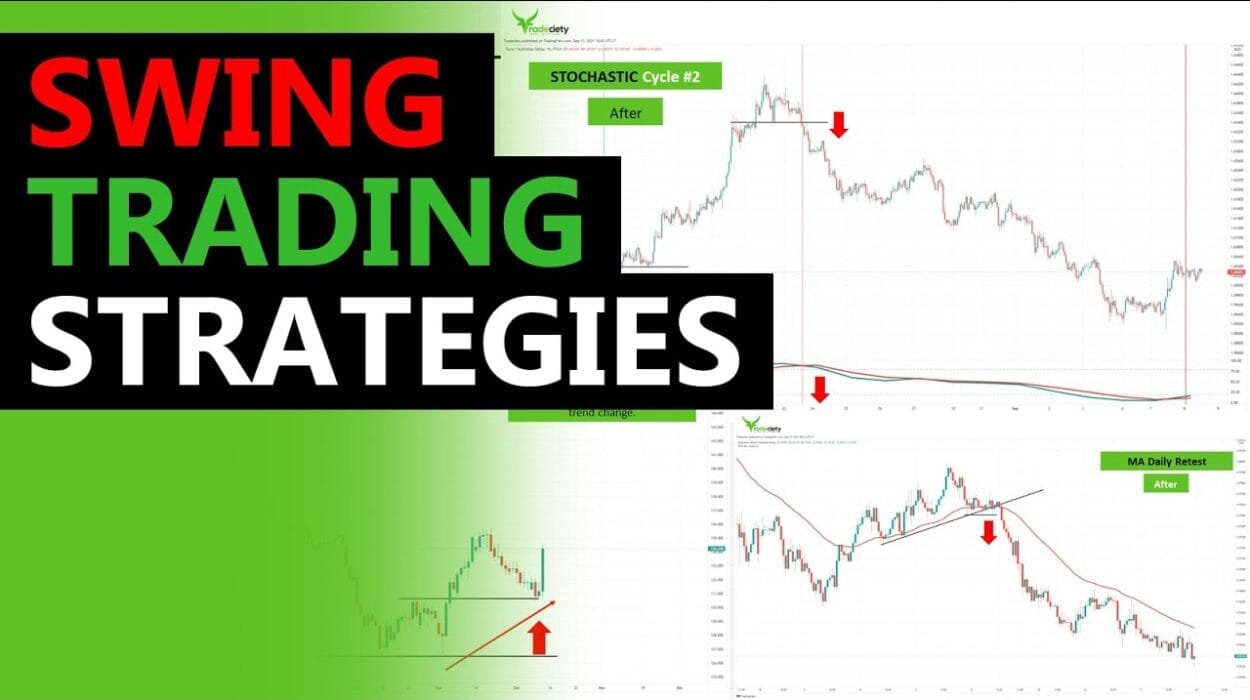The goal of the well-liked trading strategy known as swing trading is to profit from short- to medium-term price changes in the financial markets. Swing trading concentrates on capturing price “swings” that happen over a few days to a few weeks as opposed to long-term investing, when positions are kept for years, or day trading, which involves making many trades in a single day. In this post, we’ll examine the underlying ideas behind swing trading as well as a number of methods and advice to help you be successful with this innovative approach.
Understanding Swing Trading
The foundation of swing trading is the idea that markets are characterized by cyclical price changes. The goal of traders is to spot trends within these variations and place trades at potential turning points or continuation points. The objective is to take advantage of price changes that present profitable chances without constantly watching the market.
Swing Trading Techniques
Trend Following: This strategy entails spotting the current market trend and coordinating your trades with it. When the price hints at continuing its principal direction, traders place orders. They watch for pullbacks or retracements inside the trend.
Breakout Trading: Trading with breakout methods involves searching for price points at which a security departs from a predetermined range or pattern. This could be a resistance/support level or a consolidation pattern like a triangle or rectangle. The goal of breakout traders is to profit from the following price movement in the breakout’s direction.
Reversal Trading: Recognizing probable trend reversals is a key component of the reversal trading strategy. Reversal traders watch for indications that a trend is waning or becoming worn out. Once in position, they wait for a reversal to occur in the other way.
Support and Resistance: For swing trading, determining important support and resistance levels is essential. A price level known as support is where a security frequently stops dropping and occasionally even rises. The contrary is resistance, where a security usually tends to stop rising and possibly reverse. Swing traders frequently place orders close to these levels.
Candlestick Patterns: Traders examine price activity using candlestick patterns to forecast probable reversals or continuations. Engulfing patterns, doji, and hammer patterns, among others, can offer important insights into market emotion.
Moving averages: Moving averages can be used to more clearly spot trends and smooth out price data. Moving averages are used by swing traders to validate trends and to guide their trading decisions when prices cross over or bounce off these averages.
Fibonacci Retracements: During price pullbacks, Fibonacci retracement levels are utilized to determine probable support and resistance levels. These Fibonacci levels are derived levels that are significant in technical analysis.
Tips for Successful Swing Trading
Define a Strategy: Decide on a swing trading approach that fits your risk profile and trading preferences. Maintain your chosen course of action and refrain from regularly switching tactics.
Risk management: Use proper position sizing and stop-loss orders to reduce potential losses. Never put more than a modest portion of your trading cash at danger in a single transaction.
Utilize Technical and Fundamental Analysis: To make educated trading decisions, combine technical indicators with fundamental analysis. Take into account elements like news events, economic statistics, and earnings reports.
Keep a Trading Journal: Keep a thorough record of your trades, including entry and exit points, justifications, and results. You can use this to evaluate your performance and gradually refine your plan.
Develop Your Patience: Swing trading calls for patience. It’s vital to wait for the perfect settings before opening a position because not every trade will be profitable.
Conclusion
The fast-paced aspect of day trading and the long-term commitment of investment are balanced out by swing trading. Traders may benefit from the ups and downs of price swings by comprehending and using various swing trading strategies. Always keep in mind that swing trading success necessitates a combination of technical expertise, methodical execution, and a dedication to lifelong learning and development.

